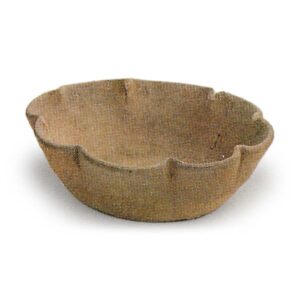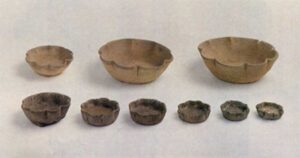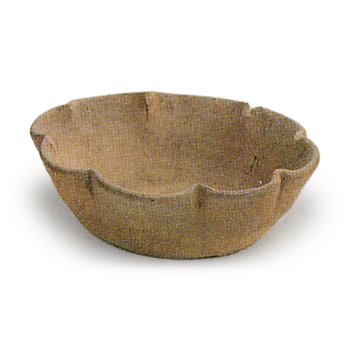

Excavated from Goshizuka Kiln, Goshizuka-cho, Seto City, Aichi Prefecture, Japan
13th century
(Large) Height: 3.1 cm, Bowl diameter: 8.1 cm, Bottom diameter: 4.5 cm
In Seto, the term “iriko” is used to describe a dish made by stacking ten or so small and large dishes of different sizes so that they could be stacked one on top of the other. There are two types of iriko: those with a rounded rim and those with the rim folded inward to form a circular flower. These types of iriko ware have been produced since the early Koseto period, and most of them died out by the end of the Kamakura period (1185-1333). They are generally older. All of them are made of fine grayish-white clay, and many of them are thin and exquisite. Iriko was traditionally thought of as ritual vessels for offerings to the gods and Buddha, but Mr. Naoei Okuda has proposed an interesting theory that it may have been used as a cosmetic tool as a rouge plate. This is a view that should be listened to.



